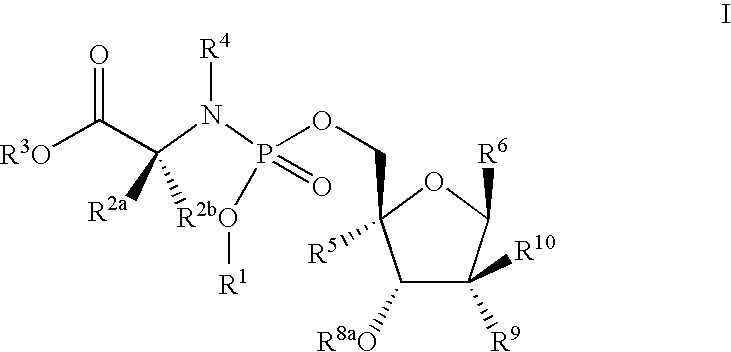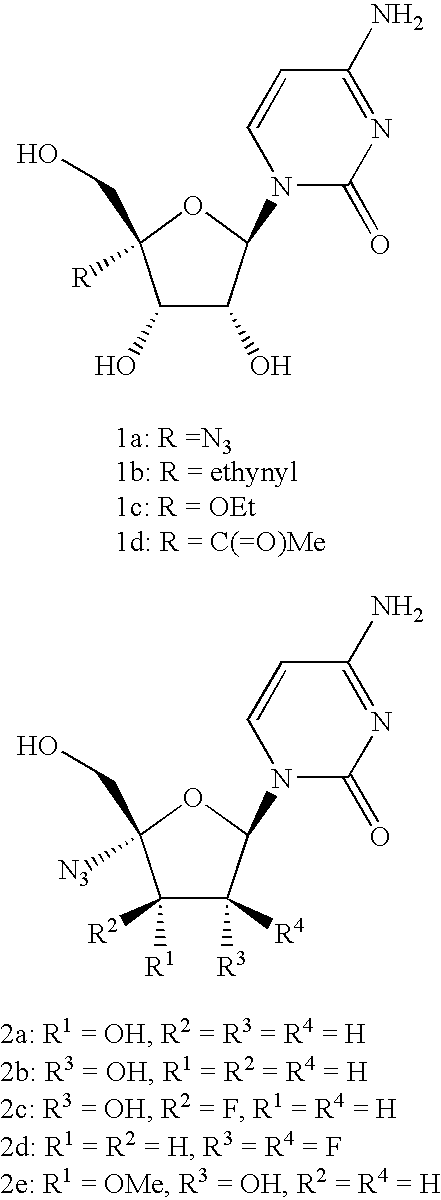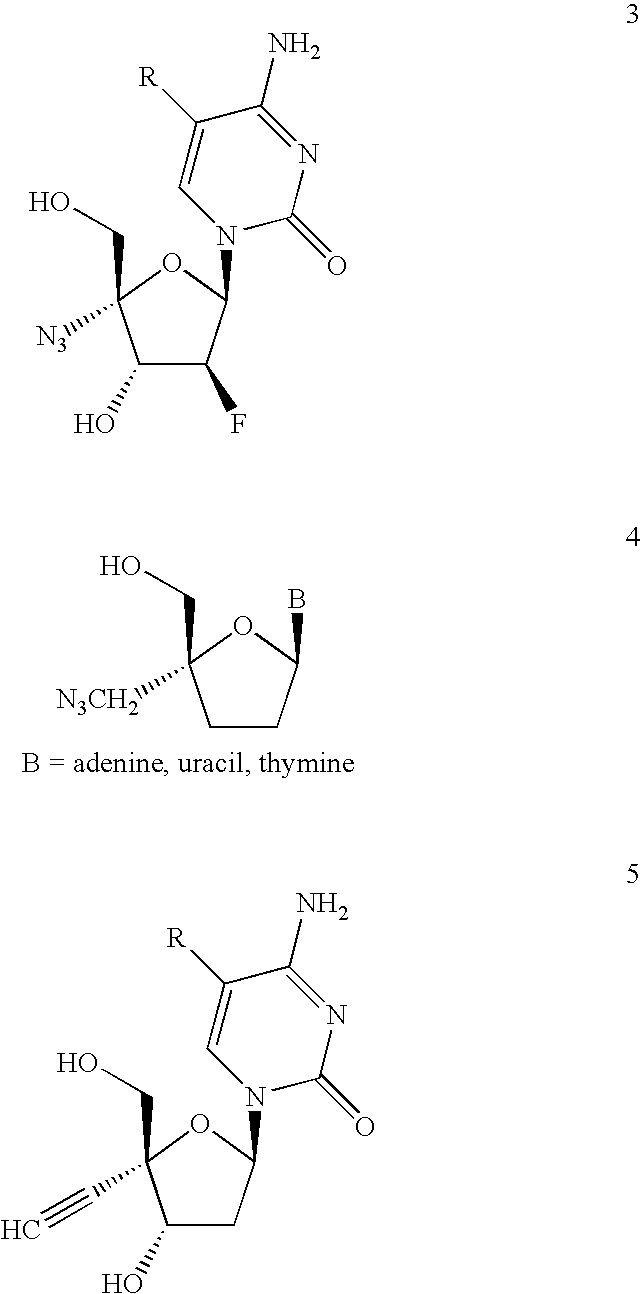Antiviral phosphoramidates
a technology of phosphoramidates and antiviral drugs, applied in the field of nucleoside derivatives, can solve the problems of poor pharmacokinetics, limited practical utility, and limited direct evaluation of nucleosides as inhibitors of hcv replication
- Summary
- Abstract
- Description
- Claims
- Application Information
AI Technical Summary
Benefits of technology
Problems solved by technology
Method used
Image
Examples
example 1
(A) General Procedure for Preparing amino acid benzyl ester hydrochloride Salts
[0126] The amino acid (1.0 mol eq.) was suspended in toluene (10 mol eq.), p-TsOH (1.1 mol eq.) and anhydrous benzyl alcohol (4.0 mol eq.) was added and the resulting mixture was heated at reflux with Dean-Stark trap for 6-24 h (the reaction was quenched when the appropriate amount of water was collected from the Dean-Stark trap). On cooling to RT, Et2O was added and the mixture was left in ice bath for 1 h then filtered and washed with Et2O. The solid was dissolved in DCM and washed with 10% K2CO3 and water. The organic layer was dried (MgSO4), filtered and the solvent removed in vacuo. The resulting product was dissolved in acetone and the mixture was neutralized with 1 M HCl. The solvent was then evaporated and the solid was triturated with Et2O to afford the amino benzyl ester hydrochloride salt as a white solid.
(B) General Procedure for Preparing amino acid ester hydrochloric Salts
[0127] Thionyl c...
example 2
General Procedure for Preparation of phosphorodichloridates
[0129]
[0130] To a stirred solution of phosphorus oxychloride (1.0 mol. eq.) and the appropriate phenol (1.0 mol. eq.) in anhydrous ether cooled to −78° C. was added dropwise anhydrous TEA (1.0 mol. eq.), and the resultant stirred mixture allowed to reach RT overnight. The triethylamine salt was quickly removed with suction filtration and the filtrate concentrated in vacuo to dryness to afford 11 as an oil which was used without further purification.
example 3
General Procedure for Preparation of phosphorochloridates
[0131]
[0132] Aryloxy-phosphodichloridate (15, 1.0 mol. equivalents) and the appropriate amino ester (14, 1.0 mol. equivalents) were suspended in anhydrous DCM (123 mol. equivalent). The reaction was cooled to −78° C. and anhydrous TEA was added dropwise and after 30 to 60 min the reaction was allowed to warm to RT and stirred overnight. The formation of the corresponding phosphochloridate was monitored by 31P NMR. The solvent was removed in vacuo and the crude residue was purified by filtration through silica eluting with EtOAc / hexane (7:3). The fractions containing the product were then collected and the solvent evaporated under reduced pressure to afford the phosphorochloridates 12. All phosphorochloridates were used as solutions in dry THF in subsequent reactions.
PUM
| Property | Measurement | Unit |
|---|---|---|
| Volume | aaaaa | aaaaa |
| Volume | aaaaa | aaaaa |
| Fraction | aaaaa | aaaaa |
Abstract
Description
Claims
Application Information
 Login to View More
Login to View More - R&D
- Intellectual Property
- Life Sciences
- Materials
- Tech Scout
- Unparalleled Data Quality
- Higher Quality Content
- 60% Fewer Hallucinations
Browse by: Latest US Patents, China's latest patents, Technical Efficacy Thesaurus, Application Domain, Technology Topic, Popular Technical Reports.
© 2025 PatSnap. All rights reserved.Legal|Privacy policy|Modern Slavery Act Transparency Statement|Sitemap|About US| Contact US: help@patsnap.com



